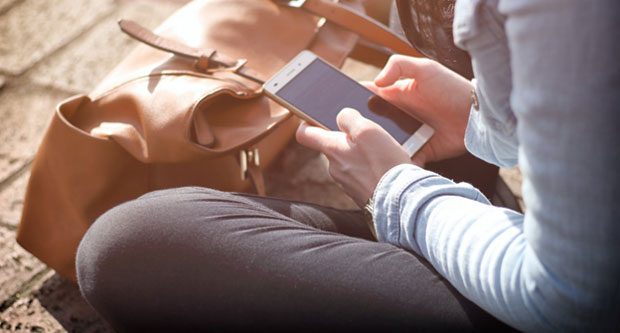Is Public WiFi Safe? (No – Here’s How to Protect Yourself)
Is Public WiFi Safe? (No – Here’s How to Protect Yourself)
Public WiFi sure is great, right? It’s extremely convenient, oftentimes a lifesaver, and it’s always right there when you need it. But that convenience comes at a cost – a pretty big one – since public WiFi isn’t safe at all.
What Makes Public WiFi Risky?
There are tons of threats, but I’ll only focus on the most common and severe ones. So, here are the dangers you expose yourself to when you use public WiFi:
- Poor or No Encryption
Most people love public WiFi because it’s free to use most of the time. You don’t have to bother getting a password to log in, so you can browse the web on the go with no distractions.
But that also means public networks don’t use any encryption. So, your web traffic is in a readable format and therefor not private at all.
Unfortunately, there’s no recent data about how many public networks don’t use encryption. We just have this research from 2016. According to it, almost 32% of the 32 million public WiFi networks audited didn’t use strong encryption. That’s around 10 million.
Data collected from nearly 600 million WiFi networks, shows that nearly 200 million networks don’t use WPA2. Still, keep in mind that the data doesn’t say how many networks are public hotspots. Also, the stats get updated continuously.
Speaking of WPA2 (the most widely-used network encryption), it’s not that safe. In fact, it has a serious vulnerability, and even WPA3 (its successor) is in trouble.
All in all, it means cybercriminals don’t find it difficult to spy on your online communications to steal: Login credentials, Bank account info and Credit card numbers
- Packet Sniffers
Packet sniffing is when hackers try to analyze data packets – basically, data that travels over the web.
Someone might try to “sniff” your traffic to steal your social media passwords, for example.
Cybercriminals don’t need to do anything too complicated to sniff web traffic – they can actually use free tools available online. If they combine it with an unencrypted public network, they’re likely to be successful.
- Fake WiFi Hotspots
A fake WiFi hotspot is a network run by a hacker that imitates legit hotspots. An example of that would be a fake network called “Starbuck5” that’s clearly posing as a legitimate Starbucks WiFi network.
Obviously, a fake hotspot almost never uses passwords. Cybercriminals basically wait for unsuspecting people to connect to their networks, so that they can monitor everything they do online.
And unfortunately, it seems that millions of people are falling for this trick. Plus, someone could actually use a device to target your device with a man-in-the-middle (MITM) attack, tricking it into connecting to the fake network.
- Malware
Yep, public networks can actually contain malware. If your device connects to them, it can get infected, and a hacker could take over.
Here’s a good example of a virus dubbed “Chameleon” that can infect WiFi networks, and quickly spread like “a cold,” apparently.
The good news is that security researchers came up with the virus, not actual hackers.
But the bad news is that a cybercriminal might not even need such a strong virus, or to worry about a network’s security to infect a public hotspot with regular malware. They could just send phishing messages to a coffee shop’s staff, for example, to trick them into downloading malicious files.
Pretty Scary Stuff – So How Do You Protect Yourself?
Things look bad, I know, but don’t worry – there are some things you can do to protect your data and privacy on public WiFi:
- Use a VPN (Virtual Private Network)
It’s an online service that hides your IP address, and also encrypts your traffic.
The encryption part means the service makes your web data completely unreadable to anyone who tries to take a look.
So, even if you use an unsecured or poorly-secured public network, hackers won’t be able to see what your do on the Internet since all your traffic is routed through an encrypted VPN tunnel.
If they try to sneak a peek, they’ll just see gibberish. In fact, a VPN can even protect you if you accidentally connect to a fake WiFi hotspot.
Just make sure you pick the right service. That can be a bit tough since there are so many providers on the market, but I’ll help you out – here’s ProPrivacy’s great list of Virtual Private Network services.
It’s a clear, easy-to-understand guide to the best VPNs on the market right now, so it should make things much simpler for you.
One VPN that is often overlooked as it’s not one of the big players is VPN.ac but its a solid option and works really well with Netflix as you can see here.
- Use Antivirus/Antimalware Protection
Since public WiFi can infect your device with malware, it’s obvious you should equip it with security software.
Unfortunately, a VPN can’t keep you safe from malware and viruses. It can secure your web traffic, but it’s not designed to secure your device too.
So install software from providers like Malwarebytes, ESET, or Norton on all your devices. And make sure to keep it up-to-date.
- Force Your Device to “Forget” WiFi Networks
If your device automatically reconnects to a public WiFi network, hackers can trick it into connecting to a fake hotspot. Do this on all your platforms.
Can’t You Just Use Your Mobile Data Plan Instead?
Well, you can – it’s a good alternative to using public WiFi to be honest.
But you’ll need an unlimited data plan if you want to browse the web without worrying about data caps. And that can be a bit pricey.
Also, keep in mind that using mobile data doesn’t mean your web traffic is 100% safe and encrypted. Your telecom provider will still manage to violate your privacy if they want to.
Guest Article. Contains a sponsored link.








